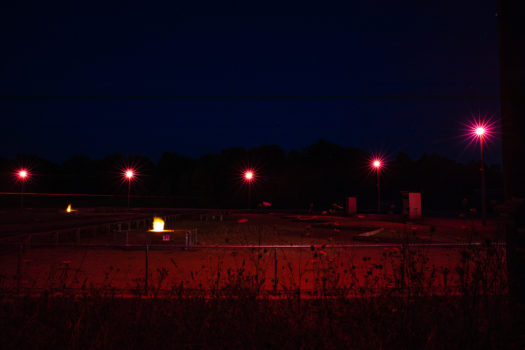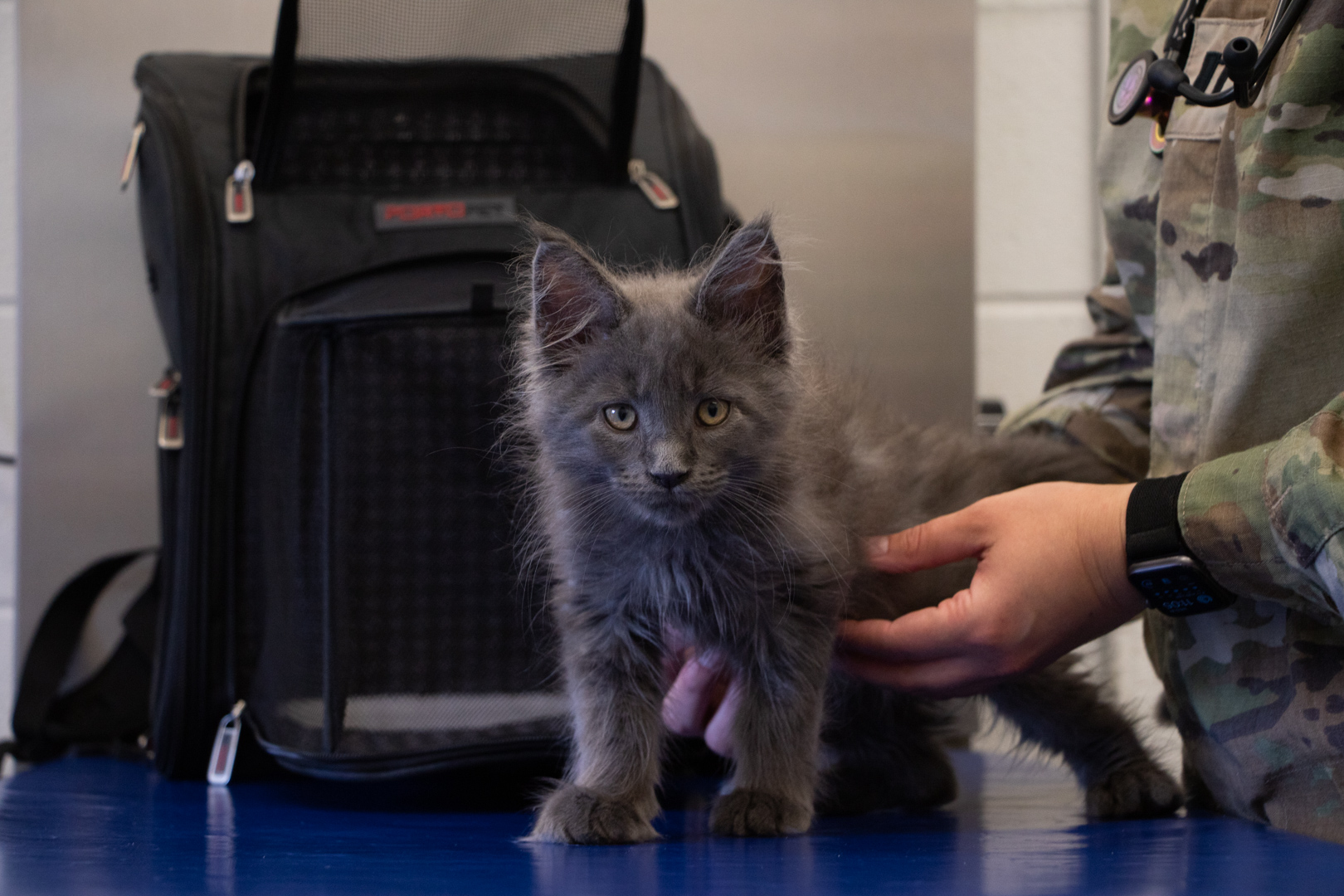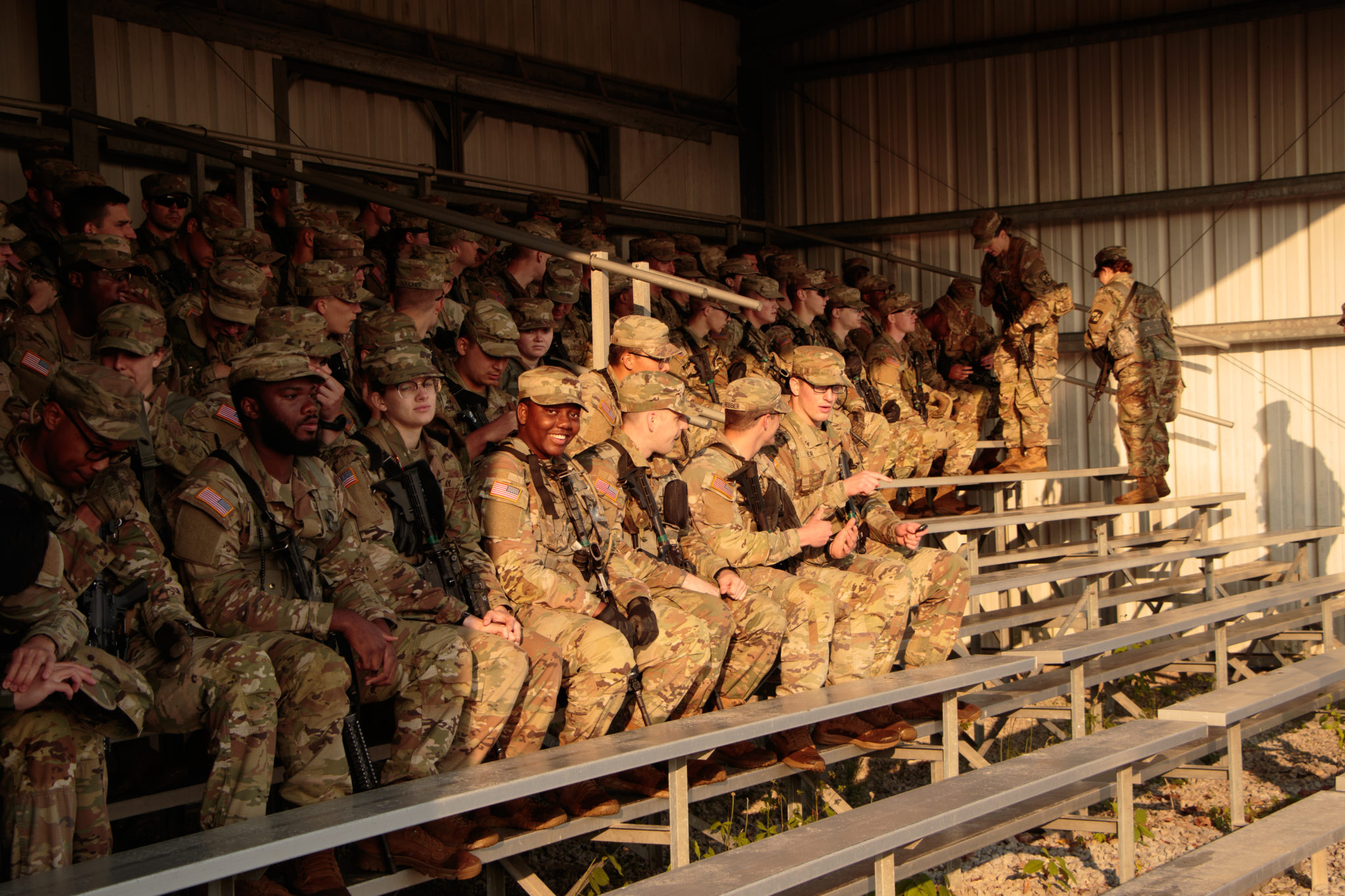“Oh my gosh, my blood is pumping. I’m ecstatic. Over there, I was yelling ‘Can we do it again?’ I want to do it again. It was so much fun,” Cadet Nicole Darland from the University of Kentucky said.
1st Regiment, Basic Camp Cadets, complete the Night Infiltration Course. This is a confidence building training exercise where Cadets crawl a 100 meters while live ammunition is fired over their heads and simulated explosions erupt on the ground around them.
While some Cadets felt nervous, Darland felt nothing but excitement to tackle the course.
“I was kind of excited. I didn’t know what to expect so when we did learn, they’re going to be shooting bullets over us, it kind of got my blood pumping,” Darland said.

Several years have passed since the Night Infiltration Course has been incorporated into the basic camp training. Lt. Col. Travis Easterling, Professor of Military Science at Jacksonville State University, recalls completing the course 21 years ago when he went through basic camp.
“Their adrenaline is skyrocketing because the lights go dark. They can’t see anything. All of a sudden, explosions start happening. Rounds are going across over the top of their heads and so the adrenaline goes from about 2 to about 9.8,” Easterling said.
Easterling said he enjoys seeing the look on each Cadet’s face after they conquer the course.
“A lot of these cadets are coming out of it, and it’s just a smile, ear to ear,” Easterling said. “It’s a unique thing that you only get at this course and so I’m ecstatic that they did it this year.”
For this course to be possible, there are several safety aspects created. Two gunmen are located in every tower, and each weapon is locked into a fixed position.
“They’re actually shooting about 10 and a half feet off the ground. So even if someone really gets scared and stands up it’s still going well above their head,” Easterling said. “They also have a SDZ, a safe distance zone, and so the SDZ makes it to where no one’s going to get impacted with a round.”
While the explosions are located on the course, they are barricaded by a chain link fence so Cadets cannot come into close contact.
Cadre members also complete the course behind the Cadets to ensure nothing goes wrong. If an incident were to occur, each cadre member can flash a white light, which would signal for all weapons and explosions to stop and the course lights would turn on illuminating the area.

Cadet Frank Winborne from Georgia Institute of Technology did not know what to expect as he approached the course.
“As we were walking up to the course it was pretty intimidating and pretty ominous because you walk around this arena, and it felt like the Hunger Games a little bit,” Winborne said.
While the course is only 100 meters long, the physical activity is strenuous and the limited light sources makes it difficult for the Cadets to navigate.
“It’s more mental than anything. I mean, halfway through my glasses were completely fogged up. I couldn’t see anything. I was going the wrong way and one of my battle buddies had to redirect me,” Winborne said. “I feel relieved after. I’m excited to go put my arms in an ice bath and do the arm immersion that we do.”




